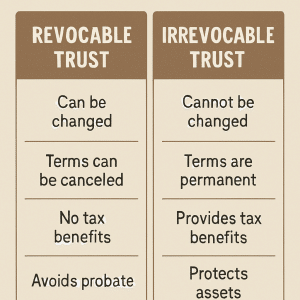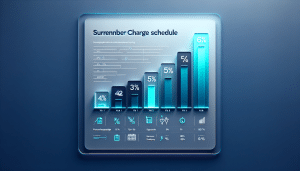The Cares Act: At a Glance
Employee Retention Credit
Arguably the largest form of relief to businesses, particularly small businesses, comes in the form of the Employee Retention Credit (ERC). Eligible employers may take a credit against employment taxes equal to 50% of wages paid to employees who are unable to work due to the business’s decline in revenue or cessation of operation.
The ERC only applies toward wages paid from March 13 through the end of 2020. Further, there are limits on the credit taken per employee, as well as qualifications as to the types of employer, employee, and wages against which the credit can be applied.
It is important to note that the ERC does not require the individual employer or employee to be directly impacted by COVID-19. In other words, no one is required to test positive for COVID-19 for the employer to take advantage of the credit.
Deferral of payroll taxes
Another form of business relief is the deferral of payroll taxes. The 6.2% OASDI payroll tax (or 50% of the self-employment tax for self-employed individuals) incurred from March 27 through the end of the year may be deferred. Half of the deferred taxes must be paid by the end of 2021, and the other half by the end of 2022.
Other relief
The CARES Act also provides:
a.) a new five-year carryback of net operating losses,
b.) an increase in the allowable deduction for business interest expenses,
c.) an extension of time for businesses to “use up” any unclaimed minimum tax credits, and
d.) a look-back deduction on expenses incurred in improving the business property.
Relief for individuals
“Coronavirus checks”
The provision of the CARES Act that has garnered the most attention is Section 2201, which provides “recovery rebates” for individuals, commonly referred to in the media as “coronavirus checks.”
These checks are advances of the special COVID-19 tax credit for the 2020 tax year. This advance refund is $1,200 for an individual, $2,400 for joint filers, and $500 per dependent child.
The checks are subject to income phaseouts based on 2018 or 2019 AGI (whichever federal tax return was most recently filed). For individuals, the phaseout begins at $75,000, and for joint filers, it begins at $150,000.
The rebate checks are reduced by $5 for every $100 above those thresholds. Individuals with an AGI above $99,000, or joint filers with an AGI above $198,000, completely phase out and are not eligible for a rebate check.
The CARES Act details other eligibility requirements that must be met in order to receive a check. A client should consult their tax or financial professional to discuss their eligibility, as well as how the receipt of the check will impact the client’s 2020 federal and state tax filings.
Waiver of the 10% penalty on COVID-19-related distributions
Another large form of relief for individuals under the CARES Act is the waiver of the 10% additional tax on early distributions from qualified retirement plans (QRPs) and individual retirement accounts (IRAs).
This favorable tax treatment is limited to distributions totaling $100,000 in the aggregate for all qualified contracts an individual holds. The favorable tax treatment may be taken by “qualified individuals,” defined as individuals who either:
a.) have tested positive for COVID-19;
b.) have a spouse or dependent who has tested positive for COVID-19; or
c.) have experienced COVID-19-related financial difficulties such as reduced hours, layoffs, furloughs, or quarantines.
The tax liability of the distribution may be spread equally over three years, and withdrawals may be rolled over to the same or another eligible IRA or QRP at any time during the same three-year period, even if the re-contributions would otherwise take the individual over their annual contribution limits.
Qualified plan loans
The CARES Act also increases the limit on loans taken from QRPs. For 2020, plan participants may take a loan of 100% of their vested balance or $100,000, whichever is less. Like the waiver on the 10% early withdrawals, the heightened loan amounts are only available to “qualified individuals,” as defined above.
Waiver of required minimum distributions for 2020
The final “big” form of individual relief under the CARES Act is the waiver of required minimum distributions (RMDs) for 2020. This waiver includes RMDs for both owners and beneficiaries, and is available to everyone, regardless of whether they have been directly impacted by COVID-19.
For IRA owners, QRP participants, and “stretch” beneficiaries, the 2020 RMD is simply not required to be taken. Account holders who have their RMDs distributed automatically but wish to waive those for 2020 should contact their custodian before the RMD is distributed. 2021 RMDs will resume as scheduled.
If an IRA owner or QRP participant has already taken their 2020 RMD, they can re-contribute it to the same contract or to another IRA within 60 days of taking the RMD. This does not extend to RMDs from inherited contracts because a beneficiary cannot indirectly roll over a distribution from an inherited contract.
For out-in-five beneficiaries (estates, non-“see-through” trusts) and out-in-ten beneficiaries (post-SECURE Act non-eligible designated beneficiaries), 2020 does not count toward their payout windows. In short, the out-in-five window is now an out-in-six window, and the outing-ten window is now an out-in-eleven window.
Like in 2009, this RMD waiver was granted due to negative market conditions. 2020 RMDs are calculated using 12/31/19 account values; since then, these account values have, overall, dropped precipitously.
In waiving the RMD, Congress recognized that it is disadvantageous to force an account holder to withdraw an RMD from an account that is worth 15%–20% less than when the RMD was calculated.
Charitable deductions
The CARES Act also creates the allowance of an above-the-line tax deduction of up to $300 for charitable contributions for those taxpayers taking the standard deduction, and an unlimited charitable deduction (i.e., not capped at 60% of AGI) for those taxpayers who are itemizing.
For more complete information and additional resources, the U.S. Department of Treasury has a very useful website specifically dedicated to the Cares Act.
Cares Act Summary
COVID-19 has had a dramatic impact on almost every aspect of life in
the United States. Above the threat to public health, financial markets
have experienced substantial losses, small businesses (and even
some large ones) have suffered significant downturns in revenue
due to quarantining and social distancing, and unemployment rates
throughout the country are spiking.
The CARES Act was created to help ease the economic emergency
stemming from COVID-19. While the relief provided in the Act comes
at a considerable cost, few would disagree that the expenditure today
was necessary to prevent even larger and longer-term economic
damage in the months and years to come.
For clients who are suffering from a financial standpoint, CARES
hopefully supplies some much-needed respite as the country works
itself through this very difficult time.













